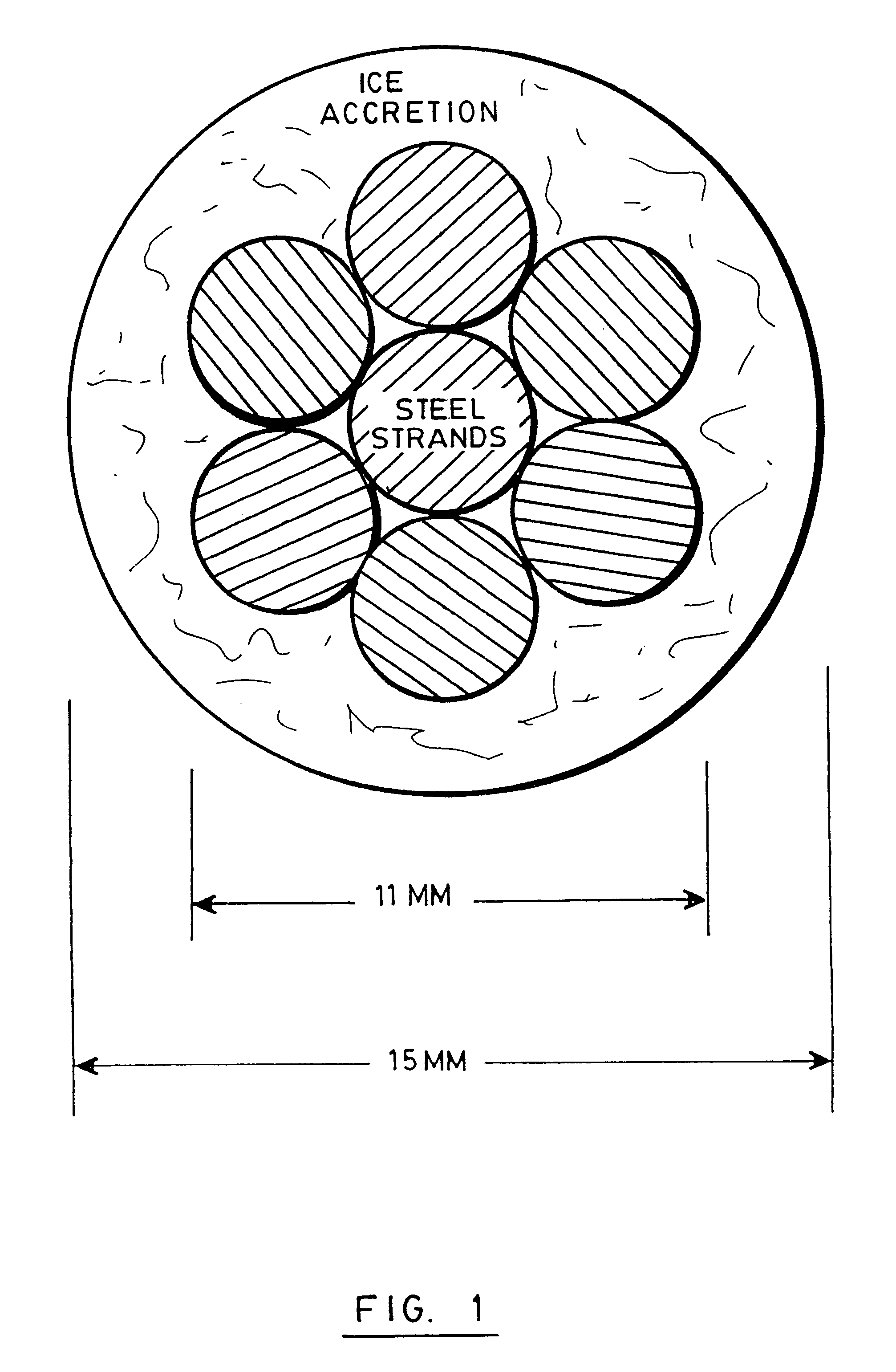Method and apparatus for breaking ice accretions on an aerial cable
- Summary
- Abstract
- Description
- Claims
- Application Information
AI Technical Summary
Benefits of technology
Problems solved by technology
Method used
Image
Examples
example of application
In the following example, the method and apparatus of the present invention are applied to low rigidity single cables. That is the case of small diameter cables, such as guy-wires of towers or masts, and ground wires used on power and distribution lines. The following describes the calculations of the main design parameters of a motorised mechanism required to twist a steel stranded cable 11 mm in diameter and 200 m in length. This cable, composed of seven galvanised steel strands 3.7 mm in diameter, is commonly used as ground wire on power and distribution lines. Its measured tensile and shearing strengths are 80,000 and 40,000 N / m.sup.2 respectively. That application sensibly corresponds to the 200 m ground wire span set-up where the first de-icing was experimented by cable twisting. As installed on the set-up, the cable at the centre of the span needs a Torque T of 1.6 Nm to rotate of one turn (27.pi. radians), which corresponds to stiffness K, 0.25 Nm / radian. Using that informa...
PUM
 Login to View More
Login to View More Abstract
Description
Claims
Application Information
 Login to View More
Login to View More - R&D
- Intellectual Property
- Life Sciences
- Materials
- Tech Scout
- Unparalleled Data Quality
- Higher Quality Content
- 60% Fewer Hallucinations
Browse by: Latest US Patents, China's latest patents, Technical Efficacy Thesaurus, Application Domain, Technology Topic, Popular Technical Reports.
© 2025 PatSnap. All rights reserved.Legal|Privacy policy|Modern Slavery Act Transparency Statement|Sitemap|About US| Contact US: help@patsnap.com



